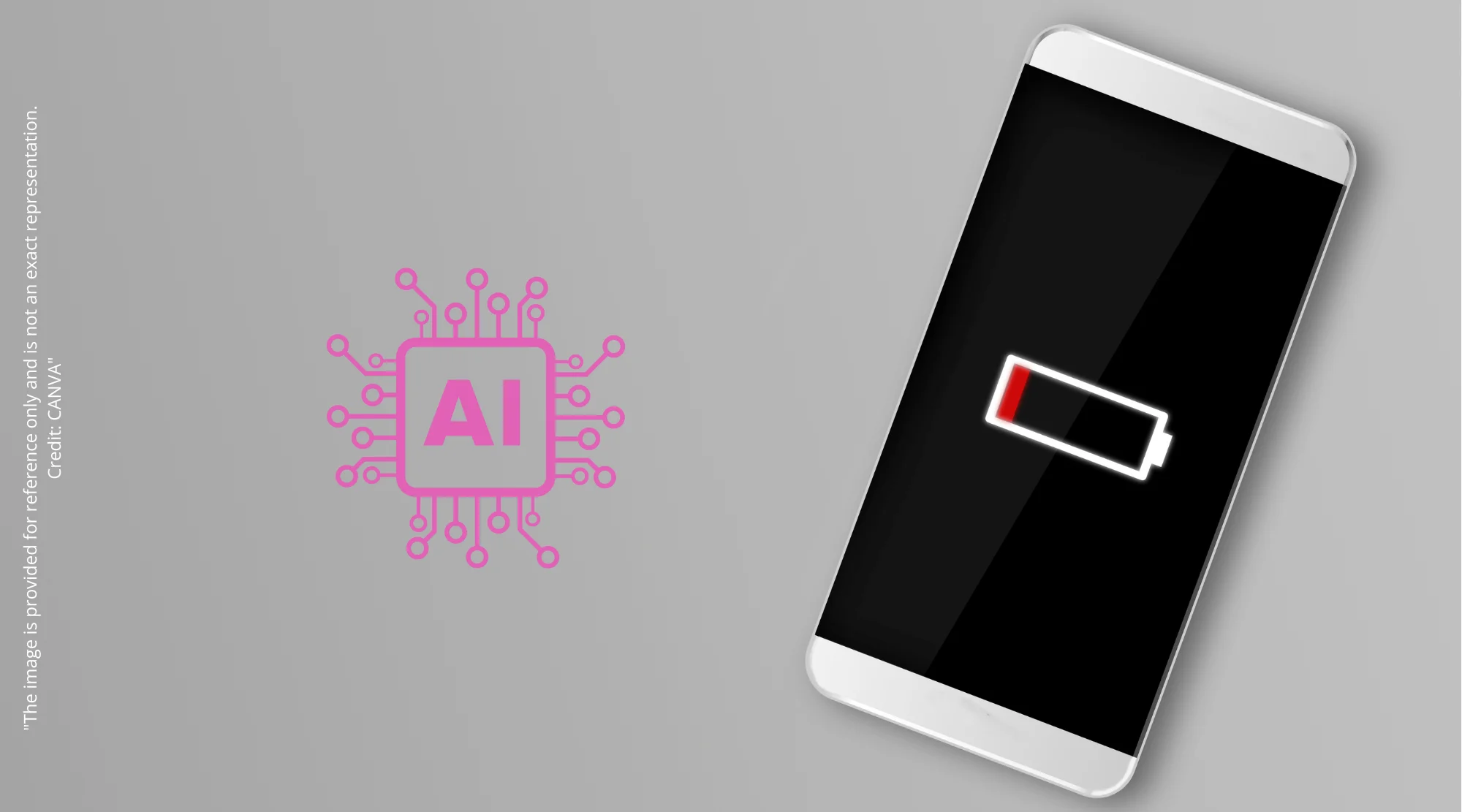AI-Powered Battery Optimization: How Your iPhone Learns to Last Longer
In a world increasingly reliant on our smartphones, battery life remains a critical concern. Apple is introducing a groundbreaking feature in iOS 26 and beyond: an AI-powered battery optimization mode. This intelligent system is designed to proactively manage your iPhone’s power consumption, ensuring your device keeps up with your demanding usage patterns. Rather than a one-size-fits-all approach, this new mode leverages Apple Intelligence to understand your unique habits and intervene precisely when it matters most, extending your battery’s longevity without disrupting your experience.
This advanced battery management system promises to be a game-changer for iPhone users. It moves beyond traditional power-saving methods by employing sophisticated algorithms to analyze how you use your device. The goal is to anticipate periods of high battery drain and make subtle, context-aware adjustments in the background. This means your iPhone can intelligently adapt to your workflow, offering more power when you need it and conserving it when you don’t, all through the sophisticated capabilities of Apple Intelligence.
Understanding the Intelligence Behind the Power Save
At its core, this innovative battery optimization mode is driven by Apple Intelligence, Apple’s suite of advanced AI and machine learning technologies. This powerful engine meticulously analyzes your iPhone usage patterns over time. It learns when you’re engaging in activities that tend to drain your battery more rapidly, such as intensive gaming, prolonged video streaming, or using GPS-heavy applications.
Once the AI identifies these high-consumption moments, it seamlessly activates behind-the-scenes adjustments. These modifications are designed to reduce power draw without significantly impacting your user experience. You might not even notice the changes happening, but the effect is a tangible increase in your iPhone’s battery endurance. This proactive approach ensures that your device is better equipped to handle your day-to-day tasks without you constantly worrying about finding a charger.

How the AI Optimizes Your iPhone’s Battery
The AI’s interventions are dynamic and context-dependent, distinguishing this feature from static low-power modes. For instance, if the AI detects that you’re heavily using your device for an extended period, it might intelligently close background applications that are consuming significant resources but are not actively in use. This frees up processing power and reduces background battery drain.
Another common adjustment involves the display. The AI can automatically dim your screen brightness or reduce the screen’s refresh rate when it senses that such a reduction won’t detract from your immediate task. This might seem like a minor change, but the screen is one of the biggest power consumers on any smartphone. By dynamically managing these settings, the AI can achieve substantial power savings.
Furthermore, the AI might prioritize network connectivity. In scenarios where 5G connectivity is consuming more power than necessary for your current activity, it could temporarily switch to a more power-efficient 4G connection. This is particularly useful in areas with inconsistent 5G signal strength, where the device might otherwise expend extra energy searching for and maintaining a weak 5G connection. These intelligent adjustments work in concert to significantly extend your iPhone’s battery life, compensating for periods of intensive use.
The Difference: Adaptive vs. Traditional Power Saving
The key differentiator of this AI-driven approach lies in its adaptive nature, especially when compared to traditional low-power modes. Classic battery-saving features typically implement a fixed set of restrictions that remain active constantly once engaged. These might include disabling background app refresh, reducing visual effects, and limiting mail fetch frequency. While effective to a degree, they often lead to a noticeable degradation in performance and user experience, and they apply these changes universally.
In contrast, the new AI-powered mode operates on a much more nuanced level. It doesn’t impose blanket restrictions. Instead, it identifies specific moments of high battery usage and applies targeted, context-aware optimizations. This means the AI might lower screen brightness during a Netflix binge but wouldn’t necessarily do so while you’re navigating with maps. It might close an infrequently used app in the background during heavy multitasking but wouldn’t interfere if you’re actively switching between two essential applications. This dynamic, intelligent intervention ensures that battery conservation doesn’t come at the expense of a smooth and enjoyable user experience. The AI’s goal is to provide a noticeable extension of battery life precisely when you need it most, without the constant compromises of older methods.
Compatibility: Who Gets the Smart Battery Boost?
This advanced AI-powered battery optimization feature is not universally available across all iPhone models. Its functionality relies on the processing power and memory capabilities that support Apple Intelligence. Therefore, only newer iPhone models equipped with the necessary hardware will be able to take advantage of this intelligent battery management. The requirement is tied to the same devices that are compatible with Apple Intelligence, ensuring that the underlying technology is robust enough to handle the complex computations involved.
The compatible devices include a specific range of iPhone models. Generally, this means the latest generations of iPhones, starting from models equipped with advanced neural engines capable of running sophisticated AI models locally. For users with older devices, while they might update to iOS 26, they will not have access to this particular intelligent battery saving feature. This focus on newer hardware ensures optimal performance and a seamless user experience for the AI’s sophisticated power management tasks.
Activating the Intelligent Battery Saver
In some instances, the AI-powered battery optimization mode may be enabled by default on compatible iPhones. However, it’s always advisable for users to manually check their settings to ensure it’s active and configured to their preference. Navigating to the battery settings is straightforward and allows for quick verification and customization.
To access these settings, open the Settings app on your iPhone. From there, scroll down and tap on the Battery section. This will present you with an overview of your battery usage and various power management options. Within the Battery settings, you will find an option labeled Adaptive Power Mode or a similar designation that clearly indicates the AI-driven feature. Simply toggle this option on.
Additionally, for users who wish to be informed when the AI is actively working to save battery, there’s often an option to enable notifications. This alert will inform you when the adaptive power mode has been engaged, providing transparency into the system’s operation. Activating this notification can help users better understand how their iPhone is managing power throughout the day and appreciate the subtle interventions made by Apple Intelligence. This proactive approach ensures you’re always in control and informed about your device’s battery performance.
The Broader Landscape of AI in Mobile Devices
The integration of AI into battery management is just one facet of a much larger trend: the pervasive influence of artificial intelligence across all aspects of mobile technology. From enhancing camera performance with computational photography to personalizing user experiences through predictive text and app recommendations, AI is fundamentally transforming how we interact with our smartphones. This shift is not limited to software; hardware components are also being designed with AI capabilities in mind, enabling more sophisticated on-device processing.
As AI continues to evolve, we can expect even more advanced features that were once the realm of science fiction. This includes more intuitive voice assistants capable of complex task execution, real-time language translation that feels entirely natural, and personalized health monitoring that can predict potential issues before they become serious. The underlying AI models are constantly being refined, pushing the boundaries of what’s possible. For instance, advancements in natural language processing, akin to those seen in tools like ChatGPT, are paving the way for more conversational and context-aware device interactions.
The ongoing development of AI in areas like generative art and 3D model creation, demonstrated by tools like Google AI Studio and Google’s Gemini AI Image Editor, also hints at the future potential for AI to enhance creative workflows directly on mobile devices. This means your smartphone could become a powerful tool not just for consumption but also for creation.
The Future of AI and Mobile Battery Life
The introduction of AI-powered battery optimization signals a significant leap forward in mobile device efficiency. As AI algorithms become more sophisticated and mobile hardware more capable, we can anticipate even more intelligent and proactive battery management solutions. This could involve AI predicting your daily schedule and proactively optimizing battery usage based on anticipated needs, or even dynamically managing power consumption at a component level for unprecedented efficiency.
The drive towards longer battery life through AI also intersects with broader industry trends. For example, the development of more efficient AI models and hardware accelerators is crucial for enabling these advanced features without significantly increasing power draw. The push for sustainability in technology also benefits from these advancements; longer-lasting batteries mean less frequent charging and a reduced overall environmental footprint.
The journey of AI in mobile devices is far from over. With continued research and development, we can expect AI to play an even more critical role in how our smartphones function, making them more intuitive, powerful, and, crucially, longer-lasting. The insights gained from analyzing usage patterns, as seen in battery optimization, will likely be applied to countless other areas, creating a more seamless and personalized mobile experience. The future promises devices that not only respond to our commands but anticipate our needs, powered by ever-evolving artificial intelligence. As AI continues its rapid development, exploring its ethical implications and potential societal impacts, such as in content generation safety or its role in the future of work, becomes increasingly important. Grok AI Ethics: Navigating the Complexities of Content Generation and Safety, AI and the Future of Work: Shorter Weeks or Sweeping Job Losses?
Conclusion: A Smarter Way to Stay Powered
Apple’s AI-powered battery optimization is more than just a new feature; it’s a testament to the growing intelligence embedded within our everyday technology. By learning from our usage and adapting intelligently, this system offers a more nuanced and effective approach to extending battery life than ever before. This proactive, context-aware optimization ensures that your iPhone is always ready when you are, minimizing the anxiety of a low battery. As AI continues to mature, expect to see even more sophisticated and user-centric applications emerge, further enhancing the capabilities and convenience of our mobile devices. This intelligent approach to power management is a significant step towards a future where our devices work smarter, not just harder, to keep us connected and productive.
